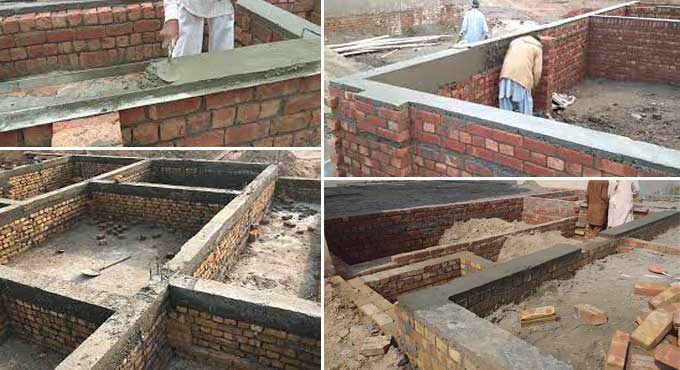
A Proper Description of the Damp Proofing Course
Providing the damp proofing course near the ground in all the construction walls prevents dampness from seeping into the walls. There may be moisture problems in properties that do not have an added damp protection layer since excess moisture rising from the ground may affect them. Wet rot or damage to unprotected wood can cause by excess moisture.
There should usually be a damp-proof course & it is above the walls of most properties of a minimum of 150mm poking through the plastic DPC sheet or bitumen may reveal a mortar course. For all new properties, a damp-proof course prevents the occurrence of rising damp. A specialist damp surveyor needs to check the properties at first to prevent dampness.
Methods of Damp Proofing
Surface Treatment
The process involves applying a surface to protect with substances or compounds that are water repellent to prevent moisture from getting in. When it comes to rail water preparation, using water-repellent soaps and plates make of calcium and aluminum is best.
Although this method does work, but its effectiveness depends on how superficial the mixture is and whether it is under pressure.
Membrane Damp Proofing
The source of the damp separates from the adjacent area of the building with a water-repellent membrane. The damp proofing course may horizontally or vertically lay on walls or floors. Materials for damp proofing can include asphalt, bitumen, polythene sheets, felt, metal sheets, and cement concrete.
Integral Damp Proofing
Concrete is impermeable with the addition of water roofing compounds. Concrete can be water-repellent and waterproof by adding compounds that act mechanically, chemically, or on a repellency basis by adding compounds that make the concrete water-resistant.
Properties of Bituminous Paint
Pressure Grouting
The process of pressure grouting involves forcing cement grout, under pressure, into cracks, voids, fissures, etc. Structural elements within the building were reinforced and enhanced to resist water penetration. This method is very sensitive and useful to detect rising groundwater seepage through a foundation structure.
Cavity wall Construction
This type of wall leaves a cavity between two outer walls to protect water from entering the building. This technique can effectively reduce dampness.
Guniting
During gunning, an impervious layer of cement mortar is placed below the pressure of 2 to 3 kilograms per square centimeter. It makes of 1-to-3 cement-sand mix and shot on the clean surface from 75 cm to 90 cm away with a cement gun. Aim to get maximum pressure by assembling approximately 75 to 90 cm from the machine's nozzle.
It is possible to deposit a thin layer of the motor mixture of desired thickness and consistency. After this layer has been cured for two weeks, then it is possible to remove it.
Benefits of Damp Proofing Course
One of the major advantages of a damp-proof course is that it prevents all health issues for the future of the building. When a damp-proof course installs in a property, & then it prevents mildew and mildew odors from spreading. A damp-proof course should install to increase paint life by removing condensation.
Damp-proof courses have another benefit besides protecting water storage structures such as reservoirs and dams. With the damp proofing course, you know how much the property is worth and how well it is maintained. It prevents wet rot and dry rot from causing structural problems.
Drawbacks of Damp Proofing Course
A disadvantage of the damp proof course is that it sometimes develops cracks the damp proof course. It also has level problems since it is damp proof.
A damp-proof course can sometimes create patches when it reaches the roof, and that is its main disadvantage. It increases the self-weight of the whole structure, which is the most common disadvantage of damp-proof courses.
Properties of Damp Proofing Course
- Impervious materials prevent moisture from being prepared.
- In order for it to resist superimposed loads, it must be strong.
- For the fracture to function properly, the material should be flexible.
- Leak-proof joints must be available.
- The market should have it at a reasonable price and it should easily accessible.
- A durable roof should last for the same number of years as the building itself.
- You should be able to buy the material for a reasonable price.
- In order to prevent material from changing its position or moving, it needs to be placed in a rigid environment.
To get more details, watch the following video tutorial.
Video Source: UltraTech Cement
Conclusion
Keeping the building dry or free of water traveling through the walls, roofs, and floors is the most important part of making it last. Hydroscopic or gravitational moist is dampness. Wetness can reduce structural strength as well as cause unhygienic conditions. The design of a building can be determined by taking damp prevention into account, and any building should be damp-proof.


